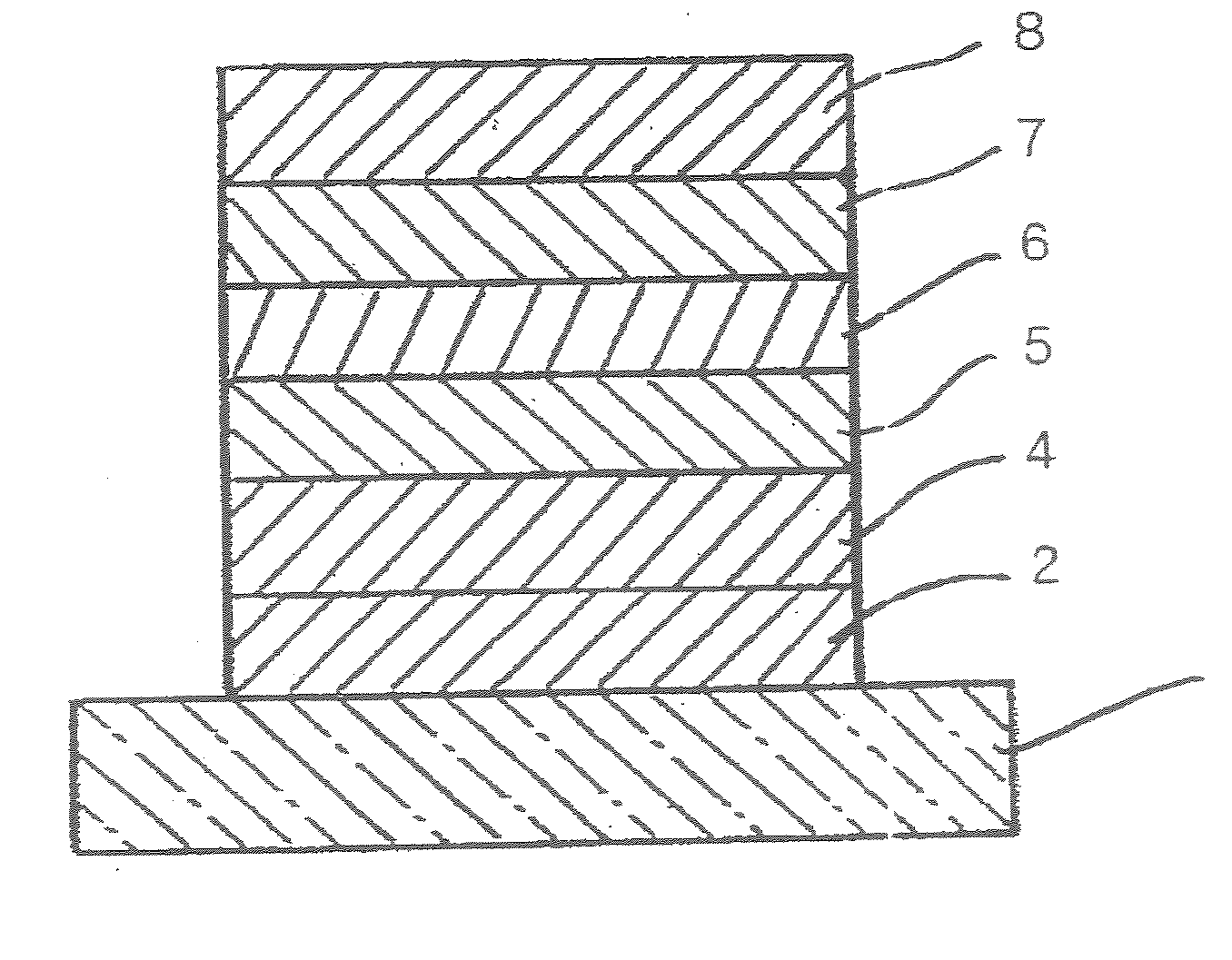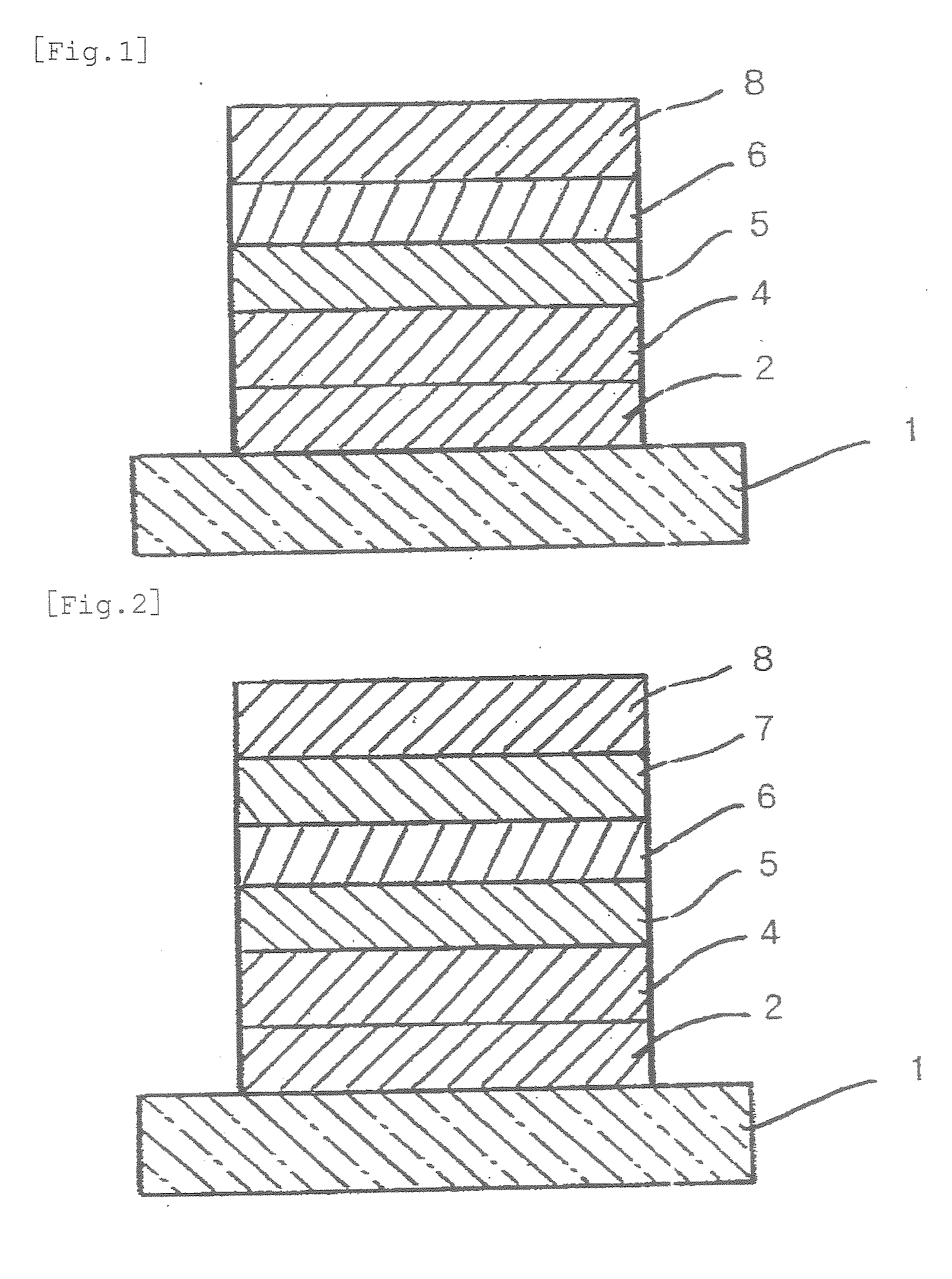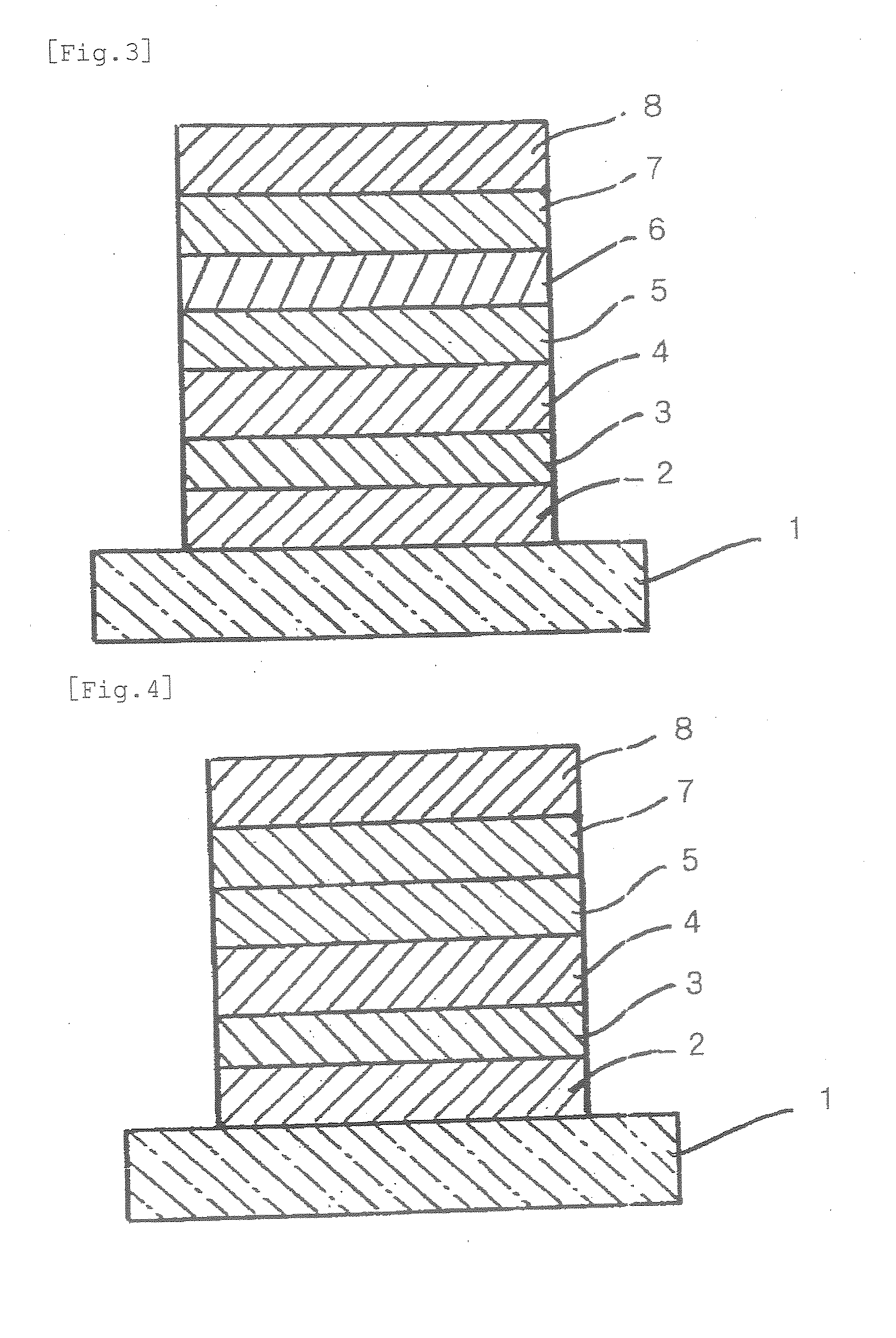Organic Compound, Charge-Transporting Material, and Organic Electroluminescent Element
- Summary
- Abstract
- Description
- Claims
- Application Information
AI Technical Summary
Benefits of technology
Problems solved by technology
Method used
Image
Examples
synthesis example 1
Syntheses of Target Compounds 1 to 3
[0318]
[0319]Concentrated sulfuric acid (11.6 ml) was added to a mixture as a solution of 2,5-difluorobenzaldehyde (10.24 g), acetophenone (8.66 g), and acetic acid (100 ml) in a dry air atmosphere, followed by stirring at 35° C. for seven hours. The mixture was combined with methanol (5 ml) and water (150 ml) to yield a precipitate, and the precipitate was collected by filtration and washed with water. This was washed in a suspended state in methanol with heating under reflux and thereby yielded Target Compound 1 (10.94 g).
[0320]Target Compound 1 (6.34 g), 1-phenacylpyridinium bromide (10.83 g), ammonium acetate (50.0 g), and acetic acid (220 ml), and N,N-dimethylformamide (220 ml) were stirred with heating under reflux in a dry air atmosphere for six hours. The resulting mixture was combined with water (440 ml) to yield a precipitate, and the precipitate was collected by filtration and washed with methanol. This was purified by washing in a suspe...
synthesis example 2
Syntheses of Target Compounds 4 to 7
[0324]
[0325]Concentrated sulfuric acid (11.4 ml) was added to a mixture as a solution of 4-bromobenzaldehyde (12.90 g), acetophenone (8.37 g), and acetic acid (100 ml), followed by stirring at 40° C. in a dry air atmosphere for five hours. The mixture was combined with methanol (100 ml) to yield a precipitate, and the precipitate was collected by filtration and washed with methanol. This was washed in a suspended state in methanol and thereby yielded Target Compound 4 (8.72 g).
[0326]Target Compound 4 (8.62 g), 1-phenacylpyridinium bromide (12.52 g), ammonium acetate (57.8 g), acetic acid (257 ml), and N,N-dimethylformamide (257 ml) were stirred with heating under reflux in a dry air atmosphere for 5.5 hours, followed by pouring into water (600 ml) with ice cooling to yield a precipitate. The precipitate was collected by filtration and washed with a mixed solvent of ethanol / water. This was purified by washing in a suspended state in ethanol with he...
synthesis example 3
Syntheses of Target Compounds 8 to 9
[0331]
[0332]Benzaldehyde (2.12 g), 2′,5′-difluoroacetophenone (6.25 g), ammonium acetate (19.7 g), and acetic acid (50 ml) were stirred at 100° C. in the atmosphere for five hours, followed by cooling with ice. The mixture was combined with methanol and water to yield a precipitate, and the precipitate was separated by filtration, purified by washing in a suspended state in methanol, dried with heating under reduced pressure, and thereby yielded Target Compound 8 (1.15 g).
[0333]Carbazole (3.03 g) was added to a suspension of sodium hydride (55%, 0.79 g) in anhydrous N,N-dimethylformamide (54 ml) in a nitrogen stream, followed by stirring at 80° C. for sixty minutes. The mixture was combined with Target Compound 8 (1.15 g) and stirred with heating under reflux for 4.8 hours. This was combined with water (50 ml) and methanol (50 ml) under cooling with ice to yield a precipitate, and the precipitate was separated by filtration and washed with methano...
PUM
| Property | Measurement | Unit |
|---|---|---|
| Melting point | aaaaa | aaaaa |
| Melting point | aaaaa | aaaaa |
| Melting point | aaaaa | aaaaa |
Abstract
Description
Claims
Application Information
 Login to View More
Login to View More - R&D
- Intellectual Property
- Life Sciences
- Materials
- Tech Scout
- Unparalleled Data Quality
- Higher Quality Content
- 60% Fewer Hallucinations
Browse by: Latest US Patents, China's latest patents, Technical Efficacy Thesaurus, Application Domain, Technology Topic, Popular Technical Reports.
© 2025 PatSnap. All rights reserved.Legal|Privacy policy|Modern Slavery Act Transparency Statement|Sitemap|About US| Contact US: help@patsnap.com



